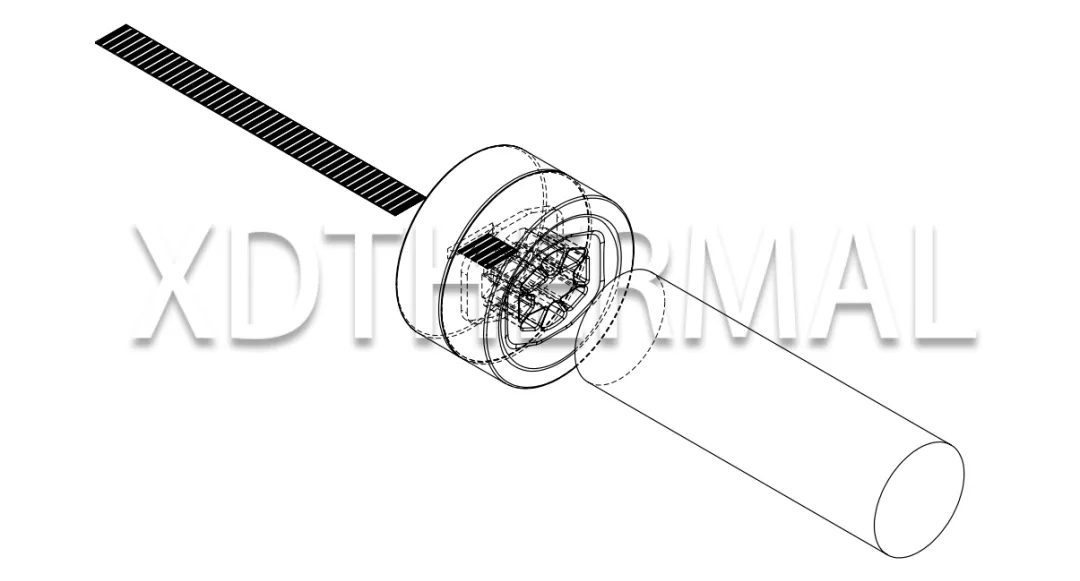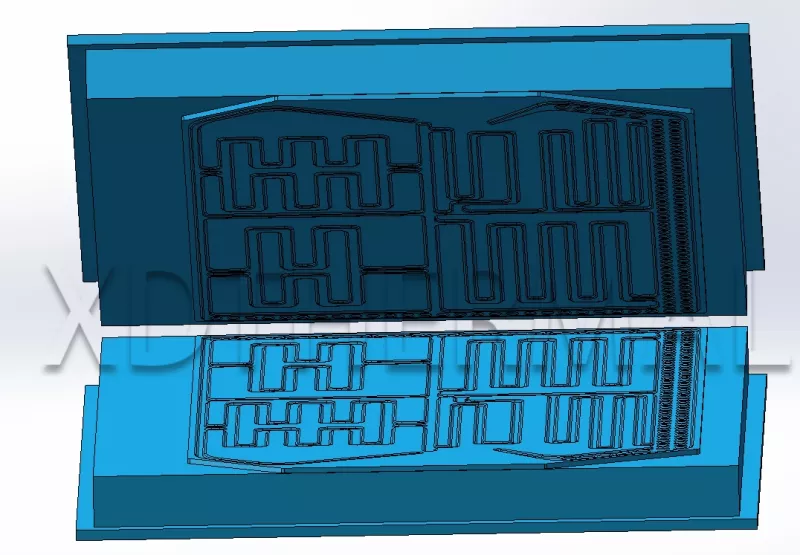As battery liquid cooling technology advances rapidly, the importance of precision manufacturing techniques becomes paramount, with molds playing a central role in the production of key components. Whether you’re a procurement professional or a structural/technical engineer, understanding molds is essential when dealing with battery liquid cooling products. This article explores the types of molds, their features, manufacturing methods, and key considerations for designing or procuring products.
The precision of molds is essential, particularly for high-volume production where even the slightest deviation in dimensions can lead to product failure or inefficiencies. Molds must be designed to ensure that the parts produced meet tight tolerances, guaranteeing both functionality and cost efficiency.
Extrusion molds are used to manufacture extruded profiles, such as cooling tubes. These molds consist of a male and female die, where the male die shapes the internal structure, and the female die forms the outer surface. During the extrusion process, materials like aluminum are heated and forced through the mold, producing continuous lengths of cooling tubes.

For example, a typical extrusion mold weighing 1.5 tons can extrude around 1 ton of finished product. After each extrusion run, the mold requires maintenance to ensure that the next batch meets the required precision and quality. The female die, which shapes the exterior, typically has a longer lifespan, whereas the male die requires more frequent repairs to maintain accuracy.
Stamping molds are commonly used to produce cooling plates. These molds can be categorized into soft molds and hard molds, depending on the production volume. Soft molds are suitable for low-volume production, while hard molds are more durable and designed for high-volume runs, able to withstand the rigorous demands of continuous use.

The choice between soft and hard molds is often determined by production needs and cost constraints. Soft molds may have lower upfront costs but require more frequent replacement, while hard molds offer long-term durability but come with higher initial costs.
The manufacturing of molds involves a variety of processing methods to ensure that they meet the precise requirements of the final products. Each method contributes to the mold’s accuracy, durability, and overall quality.
Traditional machining techniques, such as turning, milling, grinding, and drilling, are still widely used in mold manufacturing. These processes involve the removal of material to create the desired shape and features of the mold. Though effective, conventional machining is often limited by its precision, making it suitable for less complex molds.
CNC machining is employed for high-precision mold manufacturing. Using advanced equipment like CNC milling machines and lathes, molds can be produced with extreme accuracy, even for complex geometries. This technology ensures that molds maintain consistent precision across large production runs, improving overall manufacturing efficiency and reducing waste.
Several specialty processing methods are used in mold manufacturing for complex designs or high precision requirements:
This method uses electrical discharges to shape the mold, ideal for intricate designs that are difficult to machine using traditional methods.
Wire cutting employs an electric spark to cut materials with precision, making it suitable for complex mold shapes.
Ultrasonic vibration is used to process materials for precision molds, particularly those requiring fine details.
Chemical or electrolytic methods are used to create molds through controlled corrosion, often for specialized applications.
This process uses plastic deformation to shape molds, particularly for unique or specialized products.
In cases where mass production or specific mold structures are required, casting and welding are used. These methods allow for the production of large or intricate molds.
When designing or procuring molds for battery liquid cooling components, several factors must be taken into account to ensure that the molds meet both production and performance requirements.
The material used to manufacture the mold will directly affect its durability, wear resistance, and performance. Mold materials must be chosen based on the production volume, the properties of the material being molded (e.g., aluminum), and the required precision. For high-volume production, materials with high wear resistance, such as hardened steel, are typically preferred, as they ensure the mold remains effective over extended production runs.
The choice between soft and hard molds is often influenced by the expected production volume. For small-batch production, soft molds can be more cost-effective due to their lower initial investment. However, for large-scale production, hard molds are a better investment as they can withstand the wear and tear of continuous use. Balancing the upfront cost of the mold with long-term production needs is crucial for cost management.
Molds must undergo regular maintenance to ensure their continued accuracy and functionality. Maintenance tasks include cleaning, polishing, and repairing any worn or damaged components. Extrusion molds, for example, often require repairs to the male die to maintain its precision, while the female die may last longer before needing replacement.
Proper maintenance not only extends the life of the mold but also ensures that each product produced meets the required specifications, reducing the risk of product defects and costly downtime.
Mold production is a time-intensive process, with lead times typically ranging from several weeks to months. The production cycle includes design, material preparation, rough machining, finishing, assembly, and heat treatment. For complex molds, additional time may be required for testing and adjustments to ensure the mold functions correctly in mass production.
When designing or procuring molds, it is important to account for these lead times and plan production schedules accordingly to avoid delays in product delivery.
Molds play a critical role in the production of battery liquid cooling components, influencing both product performance and manufacturing efficiency. By understanding the types of molds, their manufacturing processes, and the key considerations in mold design and procurement, engineers and procurement professionals can make informed decisions that optimize both cost and performance. As battery liquid cooling technology continues to evolve, the role of precision molds will remain central to ensuring high-quality, reliable components.

I've worked in battery thermal management for over 5 years, handling lots of international projects. If you're curious about battery liquid cooling products or services, feel free to ask me any questions!